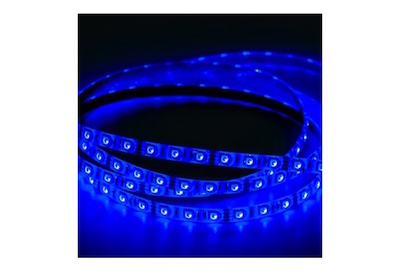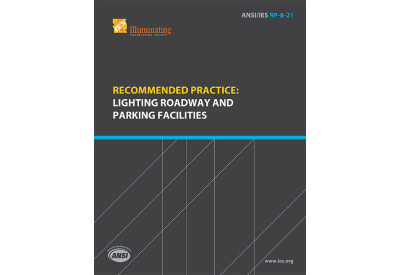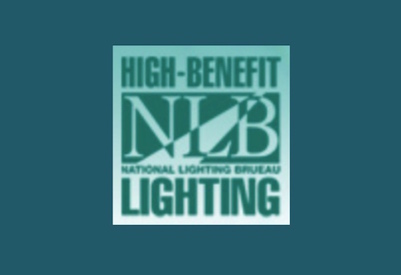Making Sense of the Rapidly Changing IoT Lighting Market

February 15, 2018
The earliest smart lighting was little more than sophisticated on/off and dimming controls — a market dominated by companies like Lutron, Leviton, Legrand, and a few others. Since then, if a facility upgrades its lighting to LED, adding sophisticated controls after the installation generates only marginal incremental energy savings and can pose technical challenges based on quality of installation and user knowledge. After all, once LEDs save 70% versus the lamps they replaced, what’s the ROI on investing in controls? But as we now know, that’s not the end of the story. Lighting control benefits are more than energy savings.
The latest networked lighting controls can include Internet of Things (IoT) connectivity. Putting a computer, connectivity, and sensors into lights can now take them beyond on/off, dimming, or even colour tuning. Now LEDs are analogous to the smart phone in your pocket, which is much more than a phone. They are data capture and control devices … in essence mini-computers. These IoT lights can monitor any space, relay sensor data to highly sophisticated software programs (outside the fixtures) that analyze the data from across the facility and provide mission-critical services to commercial, industrial, and municipal facility managers. This goes beyond the value of lighting or energy efficiency. It gets into business applications that improve productivity, reduce costs and/or generate sales.
Mission-critical services
IoT lighting can already monitor the locations of expensive equipment in hospitals, factories or warehouses. These are examples of “asset tracking.” They can also monitor the use of conference rooms or the location of shoppers in a store. These are known as “indoor positioning,” leading to better use of commercial space, reduced space requirements ($$$), and push notifications to shoppers about products on sale and product education ($$$). For a list of 30 potentially valuable applications that IoT lighting can provide (detecting gunshot location, directing you to an open parking space in a garage, etc), check “30 ways IoT lighting can solve everyday problems“ on LuxReview.com.
Taking the smart phone metaphor farther
The major Tier 1 lighting manufacturers are taking the smart phone metaphor for IoT lighting much farther. They want to be the platform on which these diverse software applications are built. They want to be like iOS and Android in our phones, with scores of third parties developing the high-value applications that run on their platforms (like in app stores). Only the largest lighting manufacturers can attempt this ambitious move (e.g., Acuity, Eaton, Hubbell). And most are proprietary systems (think Apple) that are only compatible with their hardware and will require distributors, contractors / installers and end-users to know each system in the market… or specialize in specific platforms.
Where the technology is going
There are two types of IoT lighting, wired and wireless. Wired has advantages in new construction where new wiring can be run easily. Power over Ethernet (PoE) is a wired example that uses only low-voltage computer cables for both power and data, and does not require expert installers. However, PoE requires power hubs to be installed separately to address power loss in the cable network.
Wireless IoT solutions have significant advantages, particularly in retrofit applications.
Because each light, switch or sensor in the system has a very small radio built in, no signal wires are required. This can reduce the wiring cost, but there are many competing wireless protocols available in the market. The challenge becomes which to pick. The protocols, or technologies, include Zigbee, Bluetooth, Thread, Wi-Fi, proprietary protocols, and many more. With so many options, it makes it challenging for specifiers and buyers as well as manufacturer and distributor salespeople to evaluate the pros and cons of each protocol, especially for the environment in which they will be installed and the desired usage. Unfortunately, no one protocol can do everything due to varying benefits in range, data rates, mesh scalability and capabilities, and energy consumption. The following chart, courtesy of Silicon Labs, compares the most popular wireless protocols.
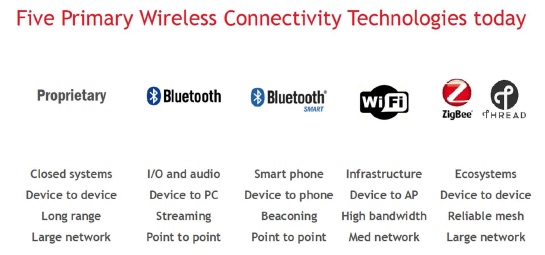
The recently released Bluetooth Mesh standard was developed with lighting as a target application, but many commercial lighting manufacturers are currently developing or supporting their own proprietary or existing Zigbee mesh ecosystem until Bluetooth Mesh is field proven. Zigbee is an open standard, and with more than one hundred million devices deployed, in theory sensors, switches, and lights can interconnect independent of fixture manufacturer. Bluetooth also has compatibility built-in, but researchers have raised concerns that Bluetooth Mesh’s communication algorithm, combined with heavy sensor integrated luminaires, could generate extreme heat and so much data that it overloads a network.
New wireless solutions use a single radio-chip to perform multiprotocol communications that address some of the challenges with all of the protocols available. One example is to combine ZigBee plus Bluetooth. The two complementary protocols enhance user experience and security. Luminaries can be commissioned easily with a mobile device via Bluetooth, while the primary network uses another secure protocol with mesh capabilities like ZigBee, Thread, or a manufacturer’s proprietary solution. Manufacturers can achieve all of this with a single radio chip that reduces size and cost, or with a faster option using pre-fabricated modules that include all of the software, antennas, and wireless know-how.
Utility rebates and the DLC NLC spec
There are interesting things happening with the Design Lights Consortium (DLC) Networked Lighting Controls (NLC) spec as well as utility rebates based on the DLC NLC spec. This year, the DLC analyzed savings from NLC installations and found an average of a 47% savings across all buildings, but this was extremely variable by building type and from building to building in the same use or type. This DLC NLC analysis will likely be used by utility rebate programs to not only expand the number of incentive programs for NLC systems, but also increase data and reporting requirements, in addition to meeting the technical NLC spec.
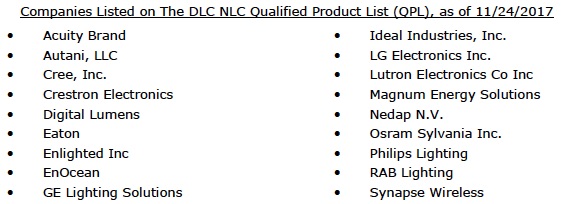
Note: While other companies may offer solutions, as of the above date, they are not DLC NLC qualified. Distributors should not view this list as “endorsed / recommended” lines by Electrical Wholesaling and/or this article’s authors.
More than 20 utilities and other energy efficiency program sponsors now require networked control systems be on the DLC NLC QPL to qualify for their incentives. Some have simple prescriptive rebates (per luminaire), while others have performance rebates (per watt saved). For more information on lighting control rebates, check the “Utility Rebates for Networked Lighting Controls” on https://lightingcontrolsassociation.org.
Challenges for distributors
There are “lots of companies”, and technologies, in the space which can make it daunting. This is coupled with the fact that controls are a small percentage of a distributor’s business and customer demand, at this time, is low.
But the opportunity is coming.
Selling of the technology requires commitment. This is not a product where salespeople “accept” an order. If they do, someone has speced the job and the opportunity will devolve to a price game.
Selling infers generating demand, which requires sales training, continuous product education, marketing, recommending the “right” product for the solution (and hence understanding customer needs), and then there is the potential for add-on services and revenue streams. And the “sale” for lighting controls will frequently occur at higher levels of customer contacts than the traditional electrical distributor calls upon. The applications and benefits of the sale are more conceptual and focus on information gathering, cost reduction and revenue generation. It is not solely a feature/benefit sale.
Leading companies in this space are educating management, their salespeople and their customer, and are investing in lighting control specialists. And some are targeting market segments to pursue and proactively generate demand.
A concern for distributors is their contractors. With many distributors being contractor oriented, distributors are waiting for contractors to request. Waiting equals quoting, not selling. Consider how you can arm your contractors, or preferred contractors, with tools for them to recommend… or to bring you into an opportunity as the “local expert.” Or consider how you can differentiate yourself in the market and drive business to contractors who have expertise in installing controls.
From a supplier support viewpoint, distributors should consider the pros/cons of solely understanding, selling, marketing and training on proprietary systems, as well as having knowledge and access to open systems. This is an Apple vs. Google scenario. You need to support your key package lighting lines, but you also need alternatives so that you can make the best recommendation and/or value engineer projects with technology that enables you to mix and match fixtures.
And don’t be afraid of FOBO (fear of a better option). These are technology platforms. They will change and this change requires you to maintain your product knowledge but it also can provide a potential upgrade revenue stream.
Of concern is that if electrical distributors do not take the lead, manufacturers will seek the channels that will generate the revenue. This could be direct sales, reps going direct as well as selling through other channels (which they are starting to do). And we have not touched on the integration into building management and security / alarm systems which can open the door to distributors from those channels.
Controlling your IoT lighting solutions
IoT. IIoT. Smart. Connected. Connectivity. The bottom line is that whatever term you prefer, it comes down to technology. The nature of technology is forever evolving. What exists today will change as tomorrow’s solutions are already in development. This creates relationship, purchasing, marketing, training, sales and other challenges for manufacturers and their channels, as well as distributors and their “supply chains”.
Decisions need to be made by distributors whether they plan to be a market leader and create demand and/or add value or provide traditional distribution services and be dependent upon others to create demand. Manufacturers can try to be the next “Apple” or participate in a “Google” ecosystem.
We’re in the very early innings of a rapidly changing market. We’ve passed the “bleeding edge” as the technology is proven and sales potential determined. Now the market is positioning to the cutting edge and will quickly be determined by those who want to be on the leading edge. Waiting to decide may relegate you to being on the bench.
David Gordon is President of Channel Marketing Group. Channel Marketing Group develops market share and growth strategies for manufacturers and distributors and develops market research. CMG’s specialty is the electrical industry. He also authors an electrical industry blog, www.electricaltrends.com. He can be reached at 919-488-8635 or dgordon@channelmkt.com.

